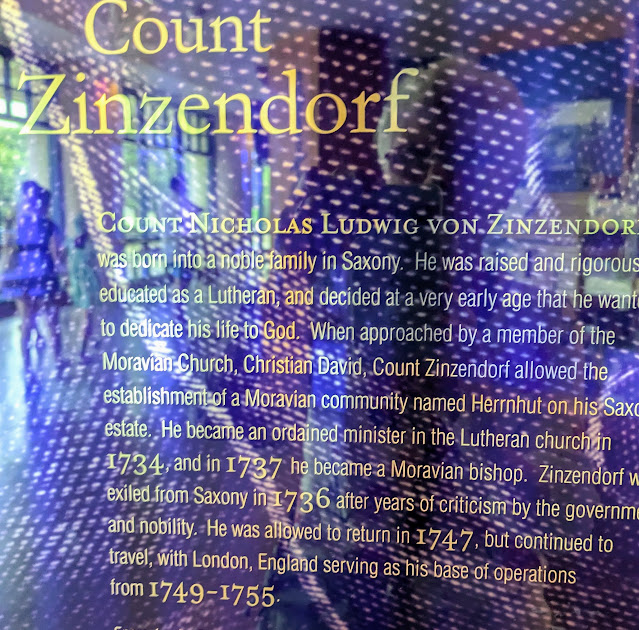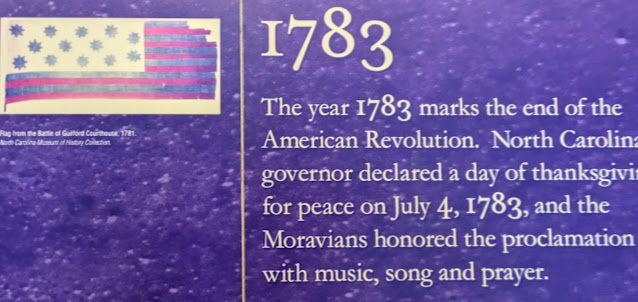Family reunions and more... from the cool Pacific, to the hot, humid Atlantic South
Miriam, Kaya, Lisa, Irene, Julie, Kevin, Roy, Elaine and KadeThree of my Allen siblings: Elaine, Roy, Irene, with Miriam
We came to Carlsbad to remember Elaine's husband, Joe Mutscheller
From the beach in Carlsbad, California, I flew with my daughter Emily and her family (the Taylors) to Charleston, SC, and drove to Salem, NC for a Schweinitz reunion (July 25-28), with Emily in charge...she did a great job with about 30 of us, from Austria, Germany, England and mostly from the US! She's a wonderful organizer, genealogist and leader.
To give you a little idea of the Schweinitz family's Moravian origins, here is some history in a nutshell.
Wachovia after the Wachau region along the Danube where Count Zinzendorf was from,
African Americans were welcome, and many became Moravians, but due to outside public pressure, they formed their own church and graveyard (along with others who were non-Moravians in 1815).
The first African church was of logs, then rebuilt with bricks (the main industry in Salem for years)Single sisters came from Bethabara (earlier settlement nearby which we would visit our last day), in 1771 (In 1766 land was cleared to build Salem), raised the funds to build a house for single sisters and girls, as well as a school that became, and still is today, the Salem Academy and College. Moravians educated their girls. There were also African-American and Native American women.
A typical sign in the South!!
Across the square from the sisters home is the home for boys and single men without families. They were taught in many academic subjects and also learned trades. Flax and pottery were an important products. Music (all instruments) in church and in everyday life was extremely important. This church is responsible for bringing music scores and much classical music to America.
Emily in front of the Moravian Archives, which houses a very extensive collection of books, papers, artifacts, records.
Very nearby is the Home (so called because many members are and have been on many continents as missionaries) Moravian Church, founded in 1774, where we attended Sunday morning service. Next door is "God's Acre," the graveyard, where graves are flat, with similar stones, as all are equal in God's eyes.
The first evening Ken planned and cooked a great barbecue at huge beautiful Reynolda Park, donated by the brother of cigarette/tobacco baron JP Reynolds. After dinner we enjoyed a hayride (tractor-pulled by a guy who happened to be from Utah!)
A wonderful morning spent in Bethabara, the first settlement in Wachovia (see below the bios of leaders). The Moravian Herrnhut Star is an important symbol. We toured the Gemeinhaus (church, multi-purpose meetinghouse), herbal gardens (all seeds brought from Europe), and watched a blacksmith at work. The first 15 men to arrive lived in a simple cabin, then another place, and were anxious to build better lodgings!
Our guide explained the "lot" system. Basically, for important decisions, a question was posed, and from the box in the Gemeinhaus was pulled a "yes", "no" or "neutral," Hmmm....
Lewis von Schweinitz, famous botanist and called the Father of Mycology, was a common ancestor of all of us there (?)
A wonderful morning spent in Bethabara, the first settlement in Wachovia (see below the bios of leaders). The Moravian Herrnhut Star is an important symbol. We toured the Gemeinhaus (church, multi-purpose meetinghouse), herbal gardens (all seeds brought from Europe), and watched a blacksmith at work. The first 15 men to arrive lived in a simple cabin, then another place, and were anxious to build better lodgings!
Our guide explained the "lot" system. Basically, for important decisions, a question was posed, and from the box in the Gemeinhaus was pulled a "yes", "no" or "neutral," Hmmm....
Great pipe organ, herb gardens
The "Irene" brought 600 Moravians to the US from 1742-1767. Many from Bethlehem, PA, came by wagon over treacherous wooded landscape to Bethabara and then on to Salem
Lewis von Schweinitz, famous botanist and called the Father of Mycology, was a common ancestor of all of us there (?)
Julius von Schweinitz (who will be the organizer of next year's reunion in his home city of Vienna. We enjoyed his company with the immediate family, after the reunion to Charleston, South Carolina.
Our farewell dinner at a restaurant home with Schweinitz heritage
Our farewell dinner at a restaurant home with Schweinitz heritage
This gingery bread pudding was delicious!
Salem, a "closed" Moravian community, lost it's church-state feeling and adapted in many ways to the use and exploitation of enslaved people, as it industrialized and saw the arrival of masses of workers of all kinds. Fries' Cotton and Woolen Mills employed many. Winston-Salem is the modern city. Kathy de Schweinitz and I had visited (the day before the reunion) the beautiful Reynolda estate of tobacco baron JP Reynolds. His wife Katharine (30 years his junior, with 4 children, and his long-time survivor) was the designer and manager. It is a beautiful place and is now home to an art gallery and center for African-American artists and writers such as Maya Angelou.
The Taylors, Julius, and I continued our vacation in Charleston (a new blog), grateful for time with extended family: new and old friends!













































































No comments:
Post a Comment